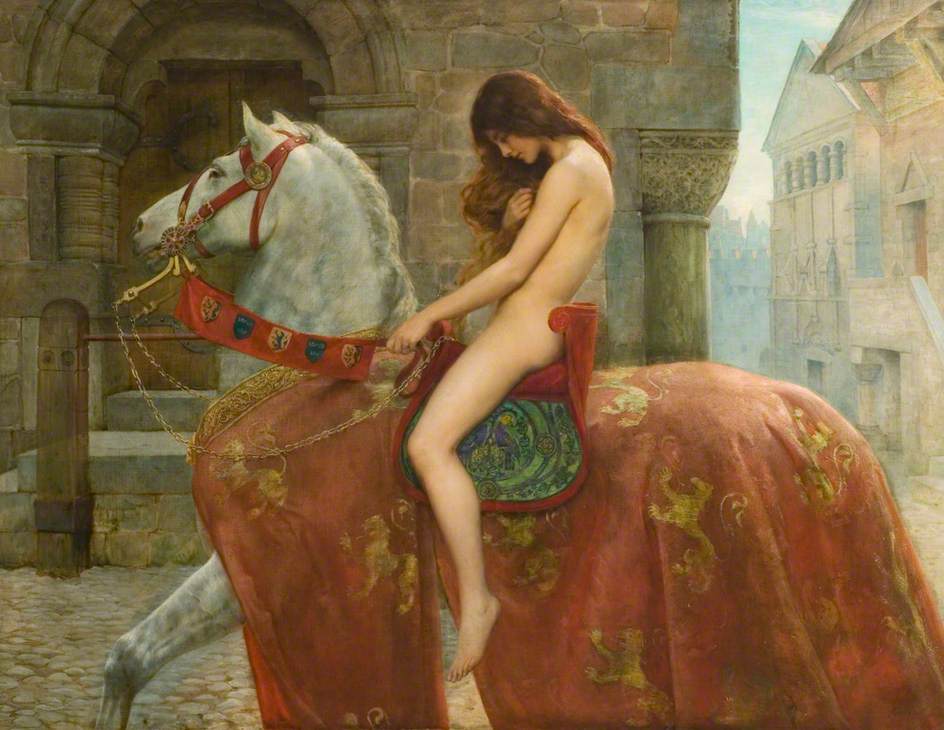I just wanted to address the new background image of the blog. It’s impossible to see the full picture as you scroll down, so I decided to make a post for it as well. As you have probably guessed from the title, the picture is of a painting of Lady Godiva. She is famous from the legend in which she rides naked through Coventry in protest of her husband’s oppressive taxation.

I think she is an important figure to observe. She is a woman who lived in a time when female sexuality was stigmatized. It was a time in which society was completely patriarchal, and when women were mere objects belonging to their husbands. What is so great about Godiva is that even with such force and stigma fighting against her, she still followed what she believed to be right. She is the ideal strong woman, who took major risks to achieve her goals. What’s even better about her, is the way she fought. She used society’s norms and stigmas to strengthen her impact. By playing up her sexuality she forces all attention on her, and the perceptions of her are then reflected on her husband because of her social standing. Instead of relying on guilt as her persuasive tool, she creates an overbearing sense of shame and embarrassment to hang over her husband. Of course the sense of guilt is still there, it just is not her main weapon. A fictional Strong woman, that is Godiva. However she isn’t the stereotypical Strong woman; she fights according to the rules of the world she lives in, in a realistic way. This is unlike the stereotypical Strong women, who seem indestructible and infallible.